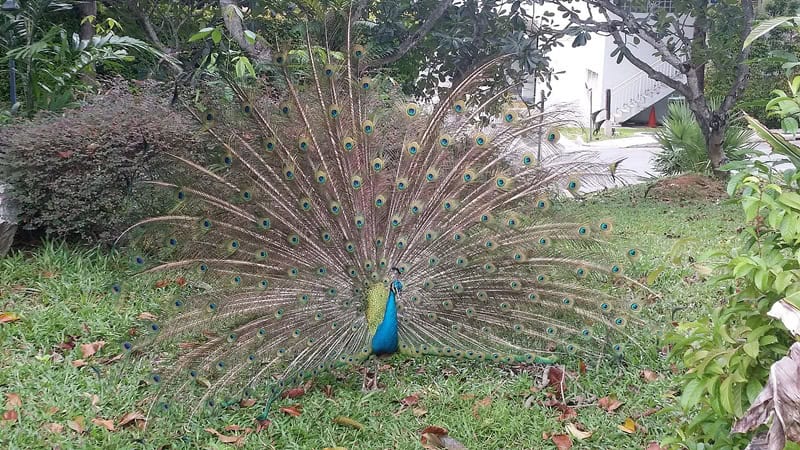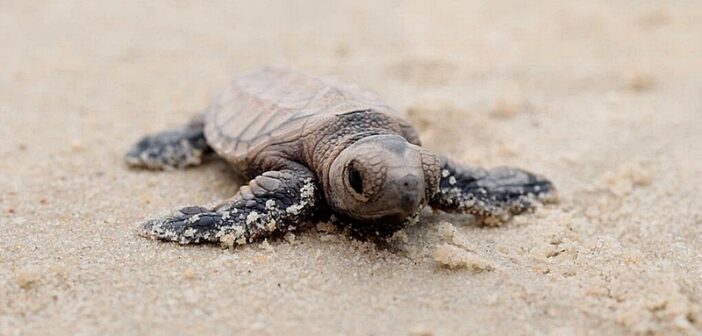The critically endangered Hawksbill Turtle has once again nested on Sentosa’s beaches!
Visitors to Sentosa may have spotted two wooden sheds painted in bright blue at Siloso Beach and Palawan Beach, complete with information on all you need to know about the Hawksbill Turtle. These are the temporary “homes” that the team at Sentosa Development Corporation has carefully built over the in-situ nests to keep the eggs safe from natural predators such as monitor lizards and crabs, human encroachment, as well as other potential disturbances during the incubation period. Through such efforts over the years, Sentosa has played a role in the conservation of these endangered turtles.
Sentosa island has been home to a variety of nature areas, ranging from the lush forests at Imbiah Hill and around Fort Siloso, to the gardens and freshwater ponds. Some areas, such as Tanjong Rimau, are also important biodiversity sites with a rich array of flora and fauna. Over the years, the team at Sentosa Development Corporation has ensured that the island’s natural environment thrived through the conservation of such nature areas, research, as well as through enhancing awareness on sustainability issues through education. As a recognition of these efforts, Sentosa is the only destination in Singapore to have been named among Green Destinations’ Top 100 Sustainability Stories. Each year, the Top 100 list puts in the spotlight destinations around the world that are taking incremental steps and making promising progress towards a more sustainable tourism industry.
Check out the fun facts at Sentosa as follows:
Fun facts you didn’t know about Sentosa’s wildlife and nature
Hawksbill turtle facts
- The last Hawksbill turtle hatching on Sentosa was in September 2019.
- Hawksbill turtles have a low survival rate, with only 1 in every 1,000 to 10,000 baby turtles making it to adulthood.
How to protect Hawksbill turtles
- Be quiet and keep a distance from the turtle
- Do not make loud noises and shine a torch at the turtle. Scaring them will hinder them from laying eggs and cause it to return to the sea
- Do not dig up the nest
- If you see turtle tracks on beaches, leave them as they are! This allows researchers to gather information.
 All images credit to Sentosa
All images credit to Sentosa
Sentosa’s flora and fauna
- 70% of Sentosa island is a natural rainforest and home to native wildlife such as the Common Palm Civet, colourful Bee-eaters and Green-crested Lizard, as well as the more commonly known peafowls, monkeys and monitor lizards.
- Sentosa has a population of more than 60 peacocks with the first pair being introduced in 1980. Sentosa has the largest number of peafowls in a single location in Singapore.
- S.E.A Aquarium is one of the world’s biggest oceanariums and houses more than 100,000 marine animals. The attraction even has the world’s largest viewing panel, which stands at 8.3m high and 36m wide.
- Tanjong Rimau is home to a variety of marine creatures – at low tide, red egg crabs, octopuses, nudibranchs and more can be seen. Long tail macaques are also occasionally sighted.
Explore Sentosa’s nature trails
- Sentosa Coastal Trail
- While on the trail, you’ll realise that these coastal forests are also home to many endangered species of plants like the Seashore Mangosteen and Dracaena maingayi, which at 200 years old is the oldest tree on Sentosa island.
- A couple of plants found along the coast are actually butterfly-attracting plants including the Caesalpinia pulcherrima, Lantana camara and Murraya koenigii.
- While on the trail you might even spot monitor lizards and birds like the Greater Racket-tailed Drongo.
- Sentosa Nature Discovery Tour
- Visit Sentosa’s new Geology Gallery to discover more interesting facts about Sentosa’s historical geological formations as well as flora and fauna.
- At the Geology Gallery, you’ll be able to see samples of different peculiar plants, their uses and where they originated from.
- One such example is the Dracaena maingayi or more commonly known as ‘Dragon Blood Tree’, as it bleeds a red sap used for pain relief and wounds in traditional medicine. Discover more fascinating insights at the gallery.
- Imbiah Trail
- Once a bare hilltop with a British gun battery, the area is now covered with a lush secondary rainforest where you can spot unique historic trees that have survived the years, such as the endangered rainforest tree, Singapore Gordonia, or the towering Common Pulai Heritage tree.




